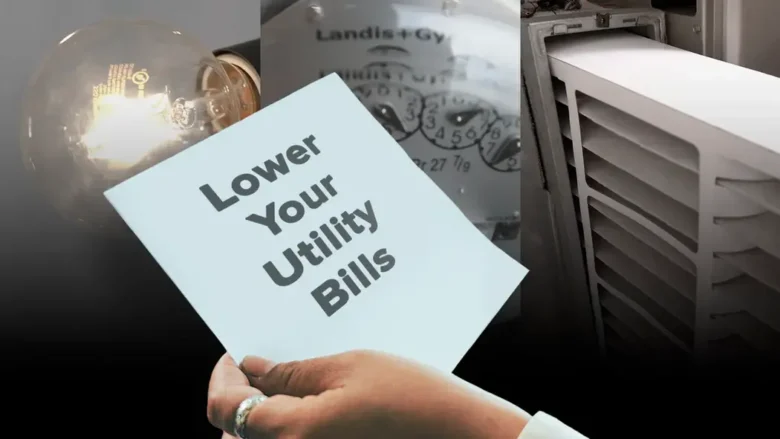Keeping your home warm, lit, and with hot water isn’t a big deal. But for many families, energy bills are a significant and often unpredictable expense. Finding strategies to reduce these costs can free up your budget for other priorities, like paying off debt or saving for travel. The good news is that you don’t have to make drastic changes to see results. With a few smart changes and strategic upgrades, you can take control of your energy bill and save significantly each month. This tutorial shows you how to save energy and water without sacrificing comfort.
Understanding Your Energy Consumption:
The first step to lowering your energy bill is understanding where your money goes. Take a close look at your monthly bills from your energy, gas, and water suppliers. These bills often contain useful information, such as graphs that show how your electricity consumption changes over time. Many energy companies also have websites where you can view accurate information about your energy consumption, often down to the hour. Understanding when you use the most energy can help you determine which habits or appliances consume the most. With this information, you can make plans to reduce your consumption in the most energy-intensive areas.
Smart Thermostat Tips:
One of the biggest energy consumers in your home is your heating and cooling system. A smart thermostat is a powerful tool that automatically adjusts the temperature based on your daily schedule, saving you money without you even realizing it. You can set the thermostat to turn down the heat or turn up the air conditioning when you’re away or asleep. By adjusting the thermostat eight hours a day, for every degree you adjust, you can save up to 1% on your heating or cooling costs. These small, regular adjustments can add up to significant savings over the course of a year, making a smart thermostat a must-have for every home.
Energy-Efficient Lighting:
The average household’s electricity bill consists of lighting costs. If you’re still using regular incandescent bulbs, you’re missing out on a simple way to save money. One of the quickest and easiest ways to save energy is to switch to LED (light-emitting diode) bulbs. LED bulbs last 25 times longer than incandescent light bulbs and use up to 90% less energy. While LED bulbs have a higher initial cost, they last longer and use less energy, saving you money on electricity and bulb replacements in the long run.
How Efficiently Is Your Water Heating?
In most homes, heating water is the second-largest energy consumer. You can save money by lowering your water heater’s thermostat. Most manufacturers set the default temperature at 72°C (140°F), but for most homes, 72°C is sufficient and can save you up to 10% on your water bill. Insulating your hot water pipes can also help, as this prevents heat loss and allows you to lower the water temperature even further. For even more savings, consider installing water-saving faucets in your sinks and showers. These accessories reduce water consumption without compromising water pressure.
Use Appliances and Make Them More Energy-Efficient:
Your refrigerator, washing machine, and other appliances consume energy every day. When purchasing new appliances, look for those with the ENERGY STAR logo. This means they meet the U.S. Environmental Protection Agency’s (EPA) high energy efficiency standards. How you use the appliance is just as important as choosing the right one. Use the air-dry cycle, not the hot air cycle, to dry dishes. Only run your dishwasher and washing machine when they are full. These small changes can significantly reduce your energy bill.
Fix Air Leaks and Improve Insulation:
Air leaks around windows, doors, and electrical outlets allow hot and cold air to escape, wasting a lot of energy. You can monitor your home’s energy consumption by feeling for drafts or by lighting a candle and watching if the flame flickers near a potential leak. To prevent energy loss, fill these gaps with caulk or weatherstripping. Properly insulating attics, walls, and crawl spaces is also important. This ensures a consistent indoor temperature and reduces the load on your heating, ventilation, and air conditioning (HVAC) system, saving you energy costs year-round.
Take Advantage of Natural Light:
Take advantage of the free natural light around you. Instead of using artificial light, open your curtains and blinds during the day to let in sunlight. This small habit can help you reduce your electricity consumption and even benefit from passive solar energy in the winter. Light-colored curtains or blinds in the summer can reflect sunlight, keeping your home cooler and reducing your need for air conditioning. Making good use of natural light is a free way to reduce your home’s energy consumption.
Regular Inspection and Maintenance:
Regular maintenance of your home’s systems keeps them running smoothly and saves you money on repairs. To ensure your HVAC system runs as smoothly as possible and reduces your energy consumption, clean or replace the filters monthly. To keep your heating and cooling system in top condition, have it professionally serviced annually. Furthermore, be sure to repair any leaking pipes or faucets immediately. Even a small amount of water can build up over time, increasing your water bill.
Discuss Rates with Your Energy Provider:
Energy options may be available in some areas. Learn about the different providers in your area and compare their plans and rates. If you’d like to learn more about discounts, budget plans, or special off-peak rates, feel free to contact your current energy provider. Some companies may offer lower rates if you agree to reduce your energy consumption during peak hours. You can save money immediately and receive a lower monthly bill with just one phone call.
Conclusion:
Lowering your monthly energy bill is an achievable goal that can save you money. Start by understanding your energy consumption and then develop a plan to make your home more energy-efficient. From changing your habits to using natural light and making smart investments like a smart thermostat, everything you do to live more sustainably and affordably counts. By consistently applying these smart strategies, you can control your spending, reduce your environmental impact, and enjoy the freedom of lower bills. Start with one or two changes today and see how much you can save.
FAQs:
1. How much can I really save with these methods?
How much you can save depends on your electricity usage, the size of your home, and the strategies you implement. But by following some of this article’s tips, many families can save 10% to 25% or more on energy bills.
2. Do smart home devices really help you save electricity?
Yes, many people need smart outlets, smart thermostats, and smart lighting. They automatically save energy and often pay for themselves within one or two years through lower energy and gas bills.
3. What’s the best way to lower my energy bill?
The best way to save money depends on your home, but the largest savings usually come from upgrading your heating and cooling systems to energy-efficient models and ensuring your home is properly insulated and sealed.
4. How can I better track my energy consumption?
Many utility companies offer online dashboards with a wealth of information about your energy consumption. You can also purchase a home energy monitor that displays your electricity consumption in real time. This allows you to see which appliances are using the most power.
5. Do I have to own a home to use these tips?
Of course not. Many suggestions can help renters, such as switching to LED light bulbs, using smart plugs, unplugging electronics when not in use, and being careful with appliances and thermostats.




